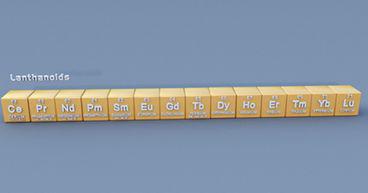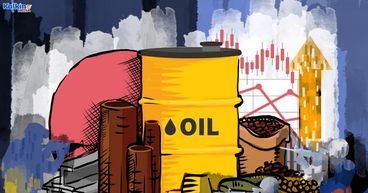Coal
109.95 USD/Mt -29.05 (-20.9%) (Last updated - July 04, 2025 08:58 PM UTC )-
-19.45%
About
| Performance USD/oz | Change |
| 5 Day | -20.76% |
| 1 Month | -25.08% |
| 3 Months | -19.45% |
| 6 Months | -19.45% |
| 52 Week | -19.45% |
July 04, 2025 08:58 PM UTC
Data Powered by Stockdio. Data delayed by 5 minutes unless otherwise indicated.Coal is a sedimentary rock that is utilised as a fuel to generate electricity. Chemically, coal comprises mostly carbon and hydrogen bonds and generates energy upon combustion. Coal is among the most prominent non-renewable fossil fuels and is the single largest source of energy used to generate electricity across the globe.
Fossil Fuels are produced from organic matters such as the remains of ancient organisms. Like other fossil fuels, coal takes millions of years to develop and is available in a limited quantity. Conditions during the Carboniferous period (about 360 million to 300 million years ago) would have produced coal. During the Carboniferous period, seas frequently covered the forested regions, trapping algae and plants. Over long periods of time, organic matter was buried and compressed under strata and vegetation.
With organic matter sifting under the earth’s surface, increased pressure and temperature decomposes plant matter at an extremely slow pace, retaining most of its carbon. The partially decayed matter is known as peat and is widely used for heating purposes in many countries.
Under extremely high temperature and pressure conditions, peat is transformed into coal through carbonisation. The vegetative matter is compressed and is reduced to just a third of its original volume. Coal is extracted from underground formations known as coal beds or coal seams, which can be as thick as 30m, stretching over more than 1,500m.
Large formations of coal are distributed across the globe. The countries with the largest coal reserves are the United States, Russia, China, Australia and India.
Frequently Asked Questions
Coal is classified on the basis of changes it has undergone over time. Hilt’s law, a prominent classification rule, mentions that the deeper the coal seam is, the greater its rank.
Peat: Peat is an agglomeration of partially decayed vegetative matter, which has undergone little carbonisation.
Lignite: Lignite is the lowest rank of coal and emits a low amount of energy upon combustion. Lignite has a carbon content between 25% and 35%. These are relatively younger coal deposits, which are over 250 million years old.
Sub-bituminous: Sub-bituminous or black lignite is a coal type with a carbon content of 35% to 45%. This type of coal has a lower heating value than bituminous coal.
Bituminous: Bituminous coal is middle-rank coal with a carbon content between 76% and 86%. This type of coal is typically produced over a period of 300 million years and has an energy density of 27 MJ/kg. High-carbon content and low-moisture content of bituminous coal make it appropriate for usage in cement and steel production along with electricity generation and coke production.
Anthracite: Anthracite is dark black coal and is the highest quality of coal. This coal type holds a carbon content of 86% and 97% and has a very low-moisture content.
Coal is used for a variety of purposes, such as electricity generation, cement production, steel manufacturing, foams and carbon filters, tars, medicines, synthetic petroleum-based fuels and commercial and home heating.
Coal is used in thermal power plants to help in the process of electricity generation. Powdered coal is burnt at high temperatures and by using this heat, water is converted into steam. Steam is then used to turn turbines at high speeds in a strong magnetic field to generate electricity.
As per the International Energy Agency (IEA), coal is the largest source of electricity generation with 35.2% of the global electricity being generated by coal-fired power stations. Furthermore, coal-fired power stations are also the largest single source of carbon dioxide emissions.
More than 40 countries including Canada, Poland, Ukraine, South Korea and Vietnam have agreed to phase out coal-fired power. This decision came at the Glasgow COP26 climate summit. Over 18 countries have already entered into an agreement to stop or phase out investments in any new coal-fired power station in their respective countries and overseas.
In addition, many private organisations including major banks and private equity firms have also pledged to divest their investments in the coal industry. With coal-powered electricity generation contributing significantly to carbon emissions, governments from all across the globe are vowing to either phase out or reduce their nation’s dependence on coal.





